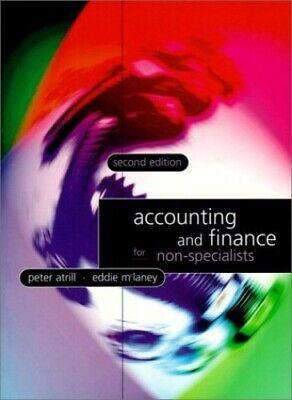Question
SYPETCO Ltd is a leading company in Australia and you the below details relating to the capital structure of the company. Information concerning raising new
SYPETCO Ltd is a leading company in Australia and you the below details relating to the capital structure of the company. Information concerning raising new capital Bonds $1,000 Face value 13% Coupon Rate (Annual Payments) 20 Term (Years) $25 Discount offered (required) to sell new bonds $10 Flotation Cost per bond Preference Shares 11% Required rate to sell new preference shares $100 Face Value $3 Flotation cost per share Ordinary Shares $83.33 Current Market Price $4.00 Discount on share price to sell new shares $5.40 Flotation Cost per bond $5.00 2021 - Proposed Dividend Dividend History $4.63 2020 $4.29 2019 $3.97 2018 $3.68 2017 $3.40 2016 Current Capital Structure Extract from Balance Sheet $1,000,000 Long-Term Debt a) Calculate the cost associated with each new source of finance. The firm has no retained earnings available.
b) Calculate the WACC given the existing weights The financial controller does not believe the existing capital structure weights are appropriate to minimise the firms cost of capital in the medium term and believes they should be as follows Long-term debt 40% Preference Shares 15% Ordinary Shares 45% c) What impact do these new weights have on the WACC? The firm is now (in 2021) considering the following investment opportunity for the period 2022-2029. Data is as follows Initial Outlay $1,600,000 Upgrade $700,000 Required at the end of Year 4 Incremental Sales 350,000 Increased sales units per annum - (Year 5-8) Working Capital $45,000 Increase required Estimated Life 8 Years Salvage Value $60,000 Depreciation Rate 0.125 For tax purposes The machine is fully depreciated by the end of its useful life Other Cash Expenses $60,000.00 Per annum (Years 1-4) Other Cash Expenses $76,000.00 Per annum (Years 5-8) Production Costs $0.15 Per Unit Sales price $0.75 Per Unit (Years 1-4) Sales price $1.02 Per Unit (Years 5-8) Sales estimates for next 8 years starting from 2022 Year Sales (Units) 2022 679651 2023 694903 $800,000 Preference Shares $2,000,000 Ordinary Shares Current Market Values $2,000,000 Long-Term Debt $750,000 Preference Shares $4,000,000 Ordinary Shares Tax Rate 33% Risk Free Rate 5% a) Calculate the cost associated with each new source of finance. The firm has no retained earnings available. b) Calculate the WACC given the existing weights The financial controller does not believe the existing capital structure weights are appropriate to minimise the firms cost of capital in the medium term and believes they should be as follows Long-term debt 40% Preference Shares 15% Ordinary Shares 45% c) What impact do these new weights have on the WACC? The firm is now (in 2021) considering the following investment opportunity for the period 2022-2029. Data is as follows Initial Outlay $1,600,000 Upgrade $700,000 Required at the end of Year 4 Incremental Sales 350,000 Increased sales units per annum - (Year 5-8) Working Capital $45,000 Increase required Estimated Life 8 Years Salvage Value $60,000 Depreciation Rate 0.125 For tax purposes The machine is fully depreciated by the end of its useful life Other Cash Expenses $60,000.00 Per annum (Years 1-4) Other Cash Expenses $76,000.00 Per annum (Years 5-8) Production Costs $0.15 Per Unit Sales price $0.75 Per Unit (Years 1-4) Sales price $1.02 Per Unit (Years 5-8) Sales estimates for next 8 years starting from 2022 Year Sales (Units) 2022 679651 2023 694903 $800,000 Preference Shares $2,000,000 Ordinary Shares Current Market Values $2,000,000 Long-Term Debt $750,000 Preference Shares $4,000,000 Ordinary Shares Tax Rate 33% Risk Free Rate 5% 2024 710155 2025 725406 2026 740658 2027 755909 2028 771161 2029 786413 d) Calculate the Net Present Value, Internal Rate of Return and Payback Period The financial controller is considering the use of the Capital Asset Pricing Model as a surrogate discount factor. The risk-free rate is 5 percent. The information in the table below has been used by company management in calculating the stock beta value which is 1.151 and the expected return on the stock which is 12.5%. Year Stock Market Share Index Price 2011 2000 $15.00 2012 2400 $25.00 2013 2900 $33.00 2014 3500 $40.00 2015 4200 $45.00 2016 5000 $55.00 2017 5900 $62.00 2018 6000 $68.00 2019 6100 $74.00 2020 6200 $80.00 2021 6300 $83.33 e) Calculate the CAPM f) Explain why this figure may differ from that calculated above (i.e. Cost of equity Ordinary Shares)
Step by Step Solution
There are 3 Steps involved in it
Step: 1

Get Instant Access to Expert-Tailored Solutions
See step-by-step solutions with expert insights and AI powered tools for academic success
Step: 2

Step: 3

Ace Your Homework with AI
Get the answers you need in no time with our AI-driven, step-by-step assistance
Get Started


